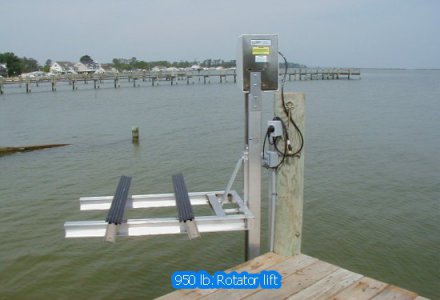get a manual boat winch for raising it. Electric winches are also good, but pricey.
I used to store a 4' x 8' torsion box against he ceiling of my wood shop. I used a large eye at each corner with a pulley in the ceiling. Then I just ran some wire rope up through the pullets, gathered them together, and attached them to the end of the winch lead. I would then attach the winch to anchors and raise the whole rig, lock the table to the ceiling with hooks, an remove the winch. It worked pretty well, the torsion box is made from 4 sheets of plywood and a sheet of melamine, so about 250 lbs. It was a pretty good system, I could do a veneer lay up, then raise the whole thing out of the way so I could use that bit of floor space. I later built a folding cantilever leg system from black pipe and it now stores on its end vertically against the wall. Every time I worked under it, all I could think about was metal fatigue, and the first rule of lifting heavy things (never get under the load). I am sure it would have been just fine, it made me feel better to move it. I used a HF winch - cost very little.
The winch will have a far longer travel than just about any other device, be of small size, and pretty cheap. It will require adding a third leg in the center for the pulleys. I would suggest doubling the wire rope back at least one time in a tackle arrangement. So, wire rope goes up to the top pulley, down to a tension pulley, then either up again or over to the winch. A winch will raise the load directly with no issues, but you will want the tackle arrangement to safely lower it. The real winner here would be a telescoping hydraulic ram, those are pretty expensive though.
The real issue I can see you having is keeping it balanced well enough to keep it from binding, you do not want it binding while lowering. You could draw the wire rope from the back corners, make sure you use a wide radius at the peak. If you mount a flange on the ends of the sliding tube, you could add rollers to protect the finish a bit, and be able to tweak the fit against binding. Probably a good idea to at least add rub blocks so you can adjust the fit, steel blocks would work fine, but I bet Delrin would hold up to the amount of use it would see pretty well.
Now that I wrote all this, it occurred to me that a cheap HF chain fall is the best solution. It will raise and lower the load directly, safely and very easily. All you would need is something to guide the chain you pull on off to one side so it won't tangle, I would just toss it over a piece of pipe using anything cheap to keep the loops separated (piece of plywood or something). I would still go to the back corners for lift points, but would use a chain rather than a wire rope for simplicity.
-Josh


